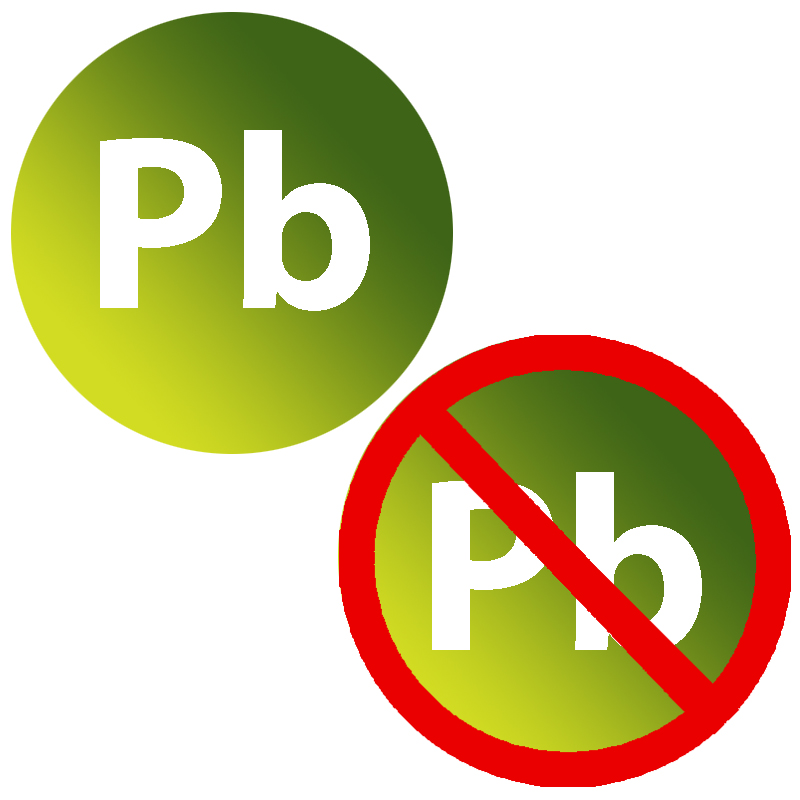To Pb or not to Pb… that is the question?
EU Directive 2011/65/EU (Restriction of the Use of Certain Hazardous Substances in Electronic and Electrical Equipment) aims to prevent hazardous substances from entering the production process and thereby keeping them out of the waste stream.
One substance , Lead (Pb) , was extensively (although not exclusively) utilised when producing the terminations of electronic components.
While the requirement to eradicate Lead (Pb) from electronic components caused some headaches early on, the vast majority of electronic component manufacturers and users were able to make a switch to a high content Tin (Sn) solder, without experiencing any significant discomfort and this was simply, by using a higher temperature process.
Exemptions to RoHS Compliance
A number of industries including Military, Aerospace, Space & Nuclear were exempt from the need to use RoHS compliant products, this was due to the unknown long-term effects on reliability the change to using new materials might present in the longer term.
Also, the phenomenon of Tin Whiskers which could grow from high Tin (Sn) finishes was not widely understood, the concern being that these whiskers could potentially grow between terminals providing a path to short circuit or could grow and dislocate from the terminal, with components potentially rattling around the enclosure causing all sorts of havoc (not ideal for life critical or mission safety applications!)
Unfortunately, for customers operating in this ultra-high reliability market, once the directive was put into place it became increasingly difficult to obtain electronic components which contain Lead (Pb) and the reason is straight forward; as the bulk of the electronic industry was simply unable to use electronic components which contain Lead (Pb), the demand plummeted by comparison to the levels when electronics components with Lead (Pb) were acceptable.
Manufacturers' Response to RoHS Compliance
The very high volume component manufacturers were left with a very difficult decision, if when moving to RoHS compliance, should they continue offering Lead (Pb) electronic components, as this would require ring-fencing processes & procedures to clearly differentiate between the two assembly techniques and also raising concerns about potential cross contamination, in a lot of instances it was quite simply not practical.
Only mass volume manufacturers who were heavily active in the Military and Hi-Rel markets continued to produce electronic components containing Lead (Pb) where the commercial justification warranted, but often imposing an increase in cost and MOQ’s.
For specialist manufacturers the decision was still not clear-cut, as offering electronic components with Lead (Pb) terminations was going to incur significant cost, as the likelihood was that they would wish to supply to the wider market the RoHS variant. The specialist manufacturers, in the main, continued to allow users to specify Lead (Pb) termination options.
Over this transition period, the number of Lead (Pb) components available for use in the Hi-Rel markets was vastly reduced, as manufacturers weighed up their positions regarding servicing these markets, and if so, to what degree.
Users that require Lead (Pb) Components
Users who needed to ensure Lead (Pb) was present, did have options available. Although individual approaches greatly depended on their attitude to risk and how far they would go to mitigate against Tin Whiskers. Some demanded a minimum ratio of Lead (Pb) to be present from as low as 3% Lead (Pb) to 40% Lead (Pb) - which was previously once the norm.
Users approach this in a number of ways:
- As Lead (Pb) Free terminated components are in the main backwards compatible with the lower temperatures used with solders containing Lead (Pb), some customers pursued using Lead (Pb) Free electronic components with soldering processes containing Lead (Pb), because Lead (Pb) is introduced when the solder is melted, therefore mitigating against a high content of Tin (Sn) being present.
- Another option deployed was through the purchasing of Lead (Pb) Free components, then using a specialist “Re‐tinning” company to convert Lead (Pb) Free components to Tin (Sn)/ Lead (Pb), then to use these “re-tinned” components with Leaded (Pb) solder – although this is not without risk , as manufacturers will often be very reluctant to agree to any warranty claim once a third-party has modified the component outside of the published specification.
- For the most demanding of applications, where safety and mission reliability are 100% critical in Military, Aerospace, Space & Nuclear applications the mandate is much more clear – use Leaded (Pb) terminated electronic components with Leaded (Pb) solder.
What can DMTL offer?
DMTL, a specialist distributor of passive components, offers Leaded (Pb) Resistors, Leaded (Pb) Capacitors & Leaded (Pb) Inductors. Below are a selection of Leaded (Pb) passive components we can offer:
- ATC (American Technical Ceramics)
http://www.atceramics.com/
Pb Components: MLCC’s (Low Cap Values, NP0/C0G, Ultra Low ESR / High Q, High Voltage, RF / Microwave applications - AVX
http://www.avx.com/
Pb Components: SMD Ceramic Capacitors, Leaded Ceramic Capacitors, SMPS Capacitors, SMD Tantalum, EMI Filters, Wet Tantalum Capacitors - Cornell Dubilier
http://www.cde.com/
Pb Components Aluminium Capacitors, Film Capacitors and Mica Capacitors - Gowanda
https://www.gowanda.com/
Pb Components: RF SMD & RF Thru-Hole, Power SMD, Ceramic Chip Inductors, Moulded Shielded / Unshielded Inductors, Epoxy Coated Chip Inductors, Custom Magnetics. - RCD Components
Pb Components: Resistors - Aluminium Housed, Surge/Pulse/Composition, Ceramic Encased, Film, Foil, Fusible, High Voltage, High Ohm, Jumper Zero Ohm, Low Ohm, Network/Hybrid, Power Film, Specialty, Surface Mount, Temp. Sensitive, Wirewound. - NovaCap (Knowles)
http://www.knowlescapacitors.com/
Pb Components: MLCC’s, High voltage, X7R / C0G, large case-sizes, stacked assemblies. - State of the Art (SOTA)
http://www.resistor.com/
Pb Components: Thick and Thin Film resistors. - Syfer (Knowles)
http://www.knowlescapacitors.com/
Pb Components: MLCC’s, High voltage, X7R / C0G, large case-sizes – EMI Filters; SMD. - Voltronics (Knowles)
http://www.knowlescapacitors.com/
Pb Components: Trimmer capacitors
Users can rest assured when working with DMTL , a specialist design-in distributor with a wide product offering and experience of supplying electronics components containing Lead (Pb), that the right product, with the right documentation is supplied, every time.

